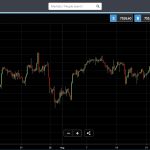
Believe it or not, one of the biggest victims of falling energy prices has been the recycling industry.
The problem is that, from a bottom line perspective, recycling doesn’t always make economic sense when commodities are cheap.
Take Waste Management Inc. (WM), the nation’s biggest recycler, for instance. One year ago, it was able to sell a bale of translucent plastic for $230. Today, that same bale reaps a mere $112. And that’s all due to the glut of cheap oil flooding the global markets.
When commodity prices were high, recyclers would pay municipalities for used aluminum cans and cardboard packaging, as they could still turn a profit selling the recycled materials.
Now that trade has been turned on its head. Most local governments are receiving nothing for their recyclables – and in many cases, they’re now paying companies to take the recyclables off their hands.
Furthermore, recycling isn’t cheap. In fact, the energy, labor, and machinery costs necessary to recycle materials can sometimes be double the cost of sending them to a landfill.
For this reason, Best Buy Co. Inc. (BBY) recently changed its in-store e-waste program, which was losing the company money. Now the retailer charges customers $25 for each TV and computer monitor recycled at its stores.
Problematic Plastics
At the end of the day, recycling is still a commodities business.
That means everything that’s recycled – paper, plastics, metal, and glass – competes with the originally manufactured material, or “virgin” goods.
Crude oil and natural gas prices are the lowest they’ve been in over a decade. And because energy is a large input cost for virgin goods, the end result is that it’s now more economical to buy the virgin materials than it is to use recycled materials.
Indeed, virgin plastic, made from the by-products of oil and natural gas production, is now much more competitive with recycled plastic, and that’s caused the decline in the market value of recycled plastic.

















Leave A Comment